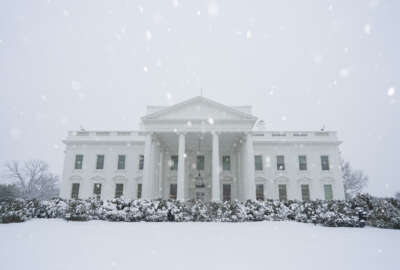Work of Cancer Genome Atlas leads to breakthroughs in cancer diagnosis, treatment
The Partnership of Public Service recently named Jean C. Zenklusen, Carolyn Hutter and the Cancer Genome Atlas Team as finalists for the 2015 Science and...

The work of federal employees and contractors is helping researchers at medical institutions around the country make significant breakthroughs in the diagnosis and treatment of cancer.
The National Health Institute’s Cancer Genome Atlas, a joint project of the National Cancer Institute (NCI) and the National Human Genome Research Institute (NHGRI), has teamed with more than 150 researchers around the world on a nine-year initiative to catalogue genomic changes associated with 33 types of tumors. These include breast, stomach, lung, bladder, skin and other types of cancer.
Since 2013, Jean Claude Zenklusen of NCI has been the director of the Cancer Genome Atlas project and Carolyn Hutter of NHGRI has been the project’s team leader.
“The Cancer Genome Atlas has changed the way we classify and treat tumors and how we develop medicines in the future,” said Dr. Harold Varmus, the former director of NCI.
Varmus praised Zenklusen’s management skills and Dr. Teri Manolio, NHGRI’s Division of Genomic Medicine, said Hutter played a crucial role in overseeing all aspects of the project.
For their work in leading the project that’s mapped thousands of gene sequences in more than 30 types of cancer, the Partnership for Public Service recently named Zenklusen, Hutter and The Cancer Genome Atlas Team as finalists for the 2015 Science and Environment Medal. The award recognizes federal employees who have made important contributions in the area of science and environment. This includes biomedicine, economics, energy, information technology, meteorology, resource conservation and space.
GETTING TO KNOW JEAN C. ZENKLUSEN
Federal News Radio asked each of the Sammies finalists five questions about themselves. Here are Zenklusen’s responses:
What three words best describe your leadership philosophy?
Consensus, consistent, fairness
What’s the best piece of advice (or words of wisdom) you’ve ever received and who gave it to you?
“Don’t put family and friends after your career. When you retire, awards are poor company.” I think the wisdom is obvious. Given to me by my Ph.D. adviser, Claudio Conti.
Who is your greatest role model and why?
Neils Bohr, a genius that broke models in science and showed what scientific integrity means to the point of exile.
What’s the last thing you read and what’s next on your reading list?
“Henri Poincare: A Scientific Biography” by Jeremy Gray. Awaiting with held breadth the next installment of the “A Song of Ice and Fire” (“Game of Thrones”) series. The book, not the TV series.
Who would you most like to have lunch with and why?
My wife. We do not get to have too much time together alone, being both scientists with two boys. Otherwise, Francis, the pope. He is the genuine article.
The Science and Environment Medal is just one of the Samuel J. Heyman Service to America Medals (Sammies) presented annually by the Partnership for Public Service. View a photo gallery of all the Sammies nominees.
Copyright © 2025 Federal News Network. All rights reserved. This website is not intended for users located within the European Economic Area.





